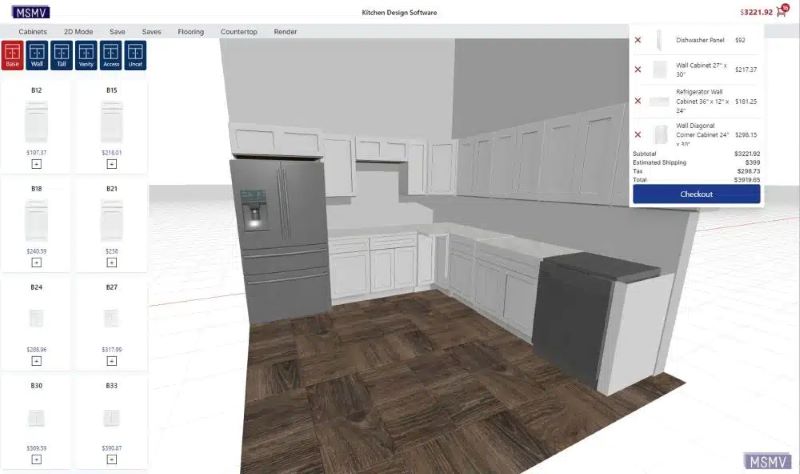Click here to get this post in PDF
Embarking on the entrepreneurial path within the interior design world is a thrilling endeavor, but selecting the right software can mean the difference between spending hours creating designs or efficiently managing a burgeoning business.
As an interior design aficionado who’s ready to turn their passion into profit, you’re probably asking, “What is the best 3D design software that can transform my ideas into a reality?” This blog post serves as a comprehensive guide to navigating the sea of software options and landing the perfect platform for your interior design startup.
Importance of Choosing the Right Software

Before delving into specifics, it’s crucial to understand why software selection is critical for your startup. The interior design industry is both creatively and technically demanding. The right software empowers you to streamline your design process, improving accuracy and efficiency. It also affects client interaction and business management, which in turn, influences your professional image and brand.
The choice of software should not be taken lightly. Rather than viewing it as an expense, consider it a strategic investment that can catalyze your success.
Every startup is unique, and your 3D kitchen design software should be a reflection of your company’s distinct vision and operational model.
Identifying your specific requirements and goals is the first step. If your forte is in residential design, you may prioritize software with advanced room planning features. In contrast, those focusing on commercial spaces may lean toward software with detailed rendering capabilities.
Assessing your budget and resources is equally important. Software costs vary, and some may require additional investments for training or hardware. Remember, the most expensive option isn’t necessarily the best for your startup. Conduct a cost-benefit analysis to ensure a solution that’s both effective and sustainable.
Key Features to Consider in a 3D Design Software
Your software should encompass various features that align with different aspects of your business. Here are some key components to prioritize:
2D and 3D Design Capabilities
Precision and visualization are quintessential in interior design. 2D tools aid in drafting floor plans and layouts, while 3D modeling lets you create photorealistic representations of your designs. Look for software with a user-friendly interface and a robust object library to enhance your designs.
Collaboration and Communication Tools
Collaboration is at the heart of great design. A good software suite will offer features that facilitate seamless interaction with clients, team members, and contractors. This can include sharable design links, virtual walkthroughs, and easy feedback collection.
Project Management Features
Staying organized is the key to delivering projects on time. Project management tools within the software can help you create timelines, manage tasks, and track project statuses. An integrated calendar and automated reminders can keep your team on track and focused on deadlines.
Integration with Other Tools
No software operates in a vacuum. Ensure that your design software can integrate with accounting, marketing, or other business tools you plan to use. This will streamline various elements of your operation and prevent data silos.
By emphasizing these features, you can select software that not only enhances your design capabilities but also fortifies your business infrastructure.
Bottom Line
Choosing the perfect software for your interior design startup is pivotal. It’s more than a tool to complete a task; it becomes the backbone of your operations, a platform for your artistry, and a gatekeeper to your professional reputation.
You may also like:
How to Choose the Right Software Development Partner for Your Business
Continuous Improvement Software Solutions: The Future Of Operational Excellence
